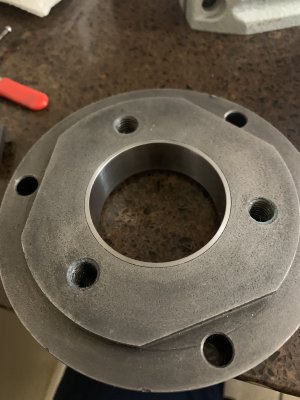Set-tru chucks are nice, and they offer the speed of a scroll chuck. You can dial a Set-tru in to pretty tight tolerances BUT it will only be super-accurate for the diameter you set it for. This really helps if you have a production run on a bunch of precision rod. However, once you change to a different diameter you have to re-set the chuck for that diameter to regain really low run out.
There is a misconception that a Set-tru can be dialed in and it will then be accurate for ALL diameters you put in the chuck. This is not so, again because of the nature of a scroll chuck.
I own a near mint Pratt Burnerd 6 jaw Set-Rite chuck that I can dial in to about 0.0001" TIR and it will repeat that run out if I chuck up the same diameter work piece but the run out changes significantly if I use any other diameter. I can bring it back in to ridiculous run out for another diameter but it takes time. If I just set it once and use it on everything, it has about 0.001" TIR or less. Still pretty accurate but do you really need a $2,000 chuck for first operations? I don't think so.
Personally, I use an Emco/Rohm 3 jaw the vast majority of the time for first ops and an Emco/Rohm 4 jaw for second ops. I rarely use the 6 jaw except for plastics or thin-walled pieces and I use an ER chuck even less often for polished/knurled/threaded parts.



